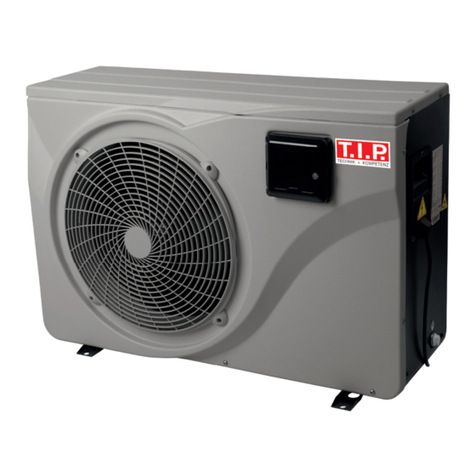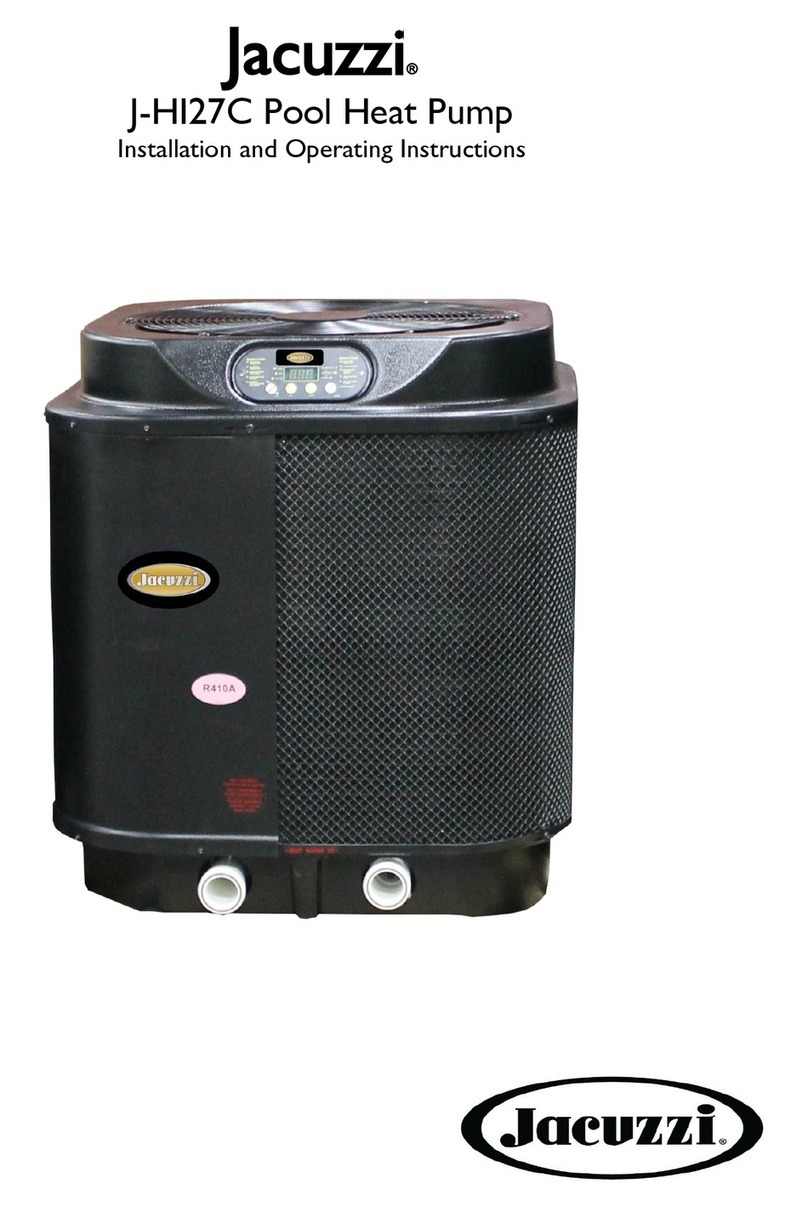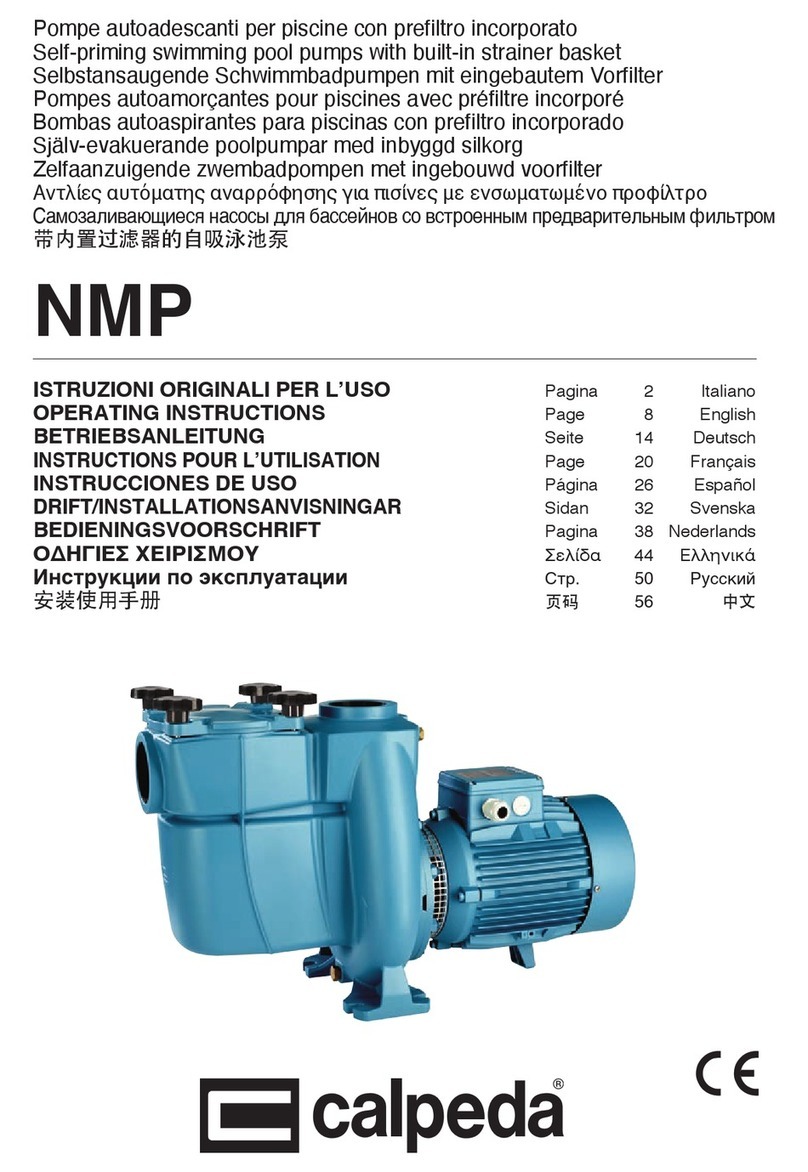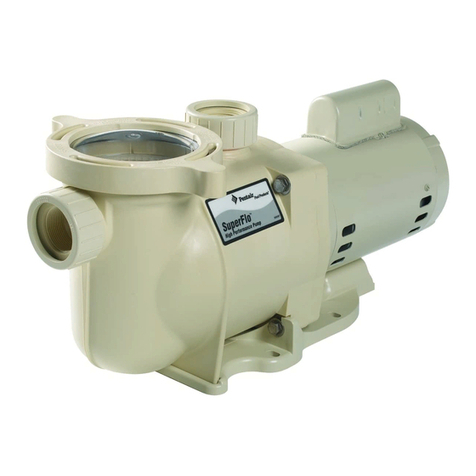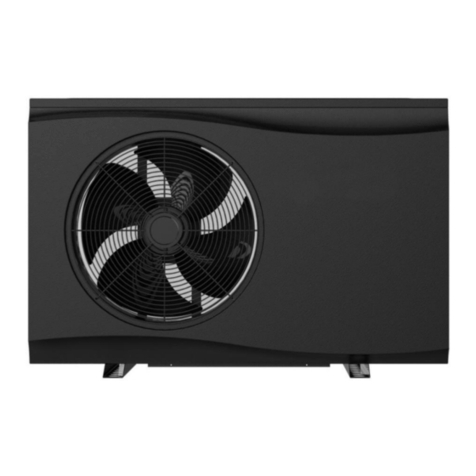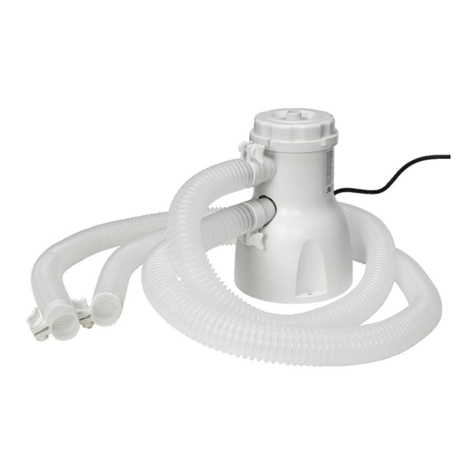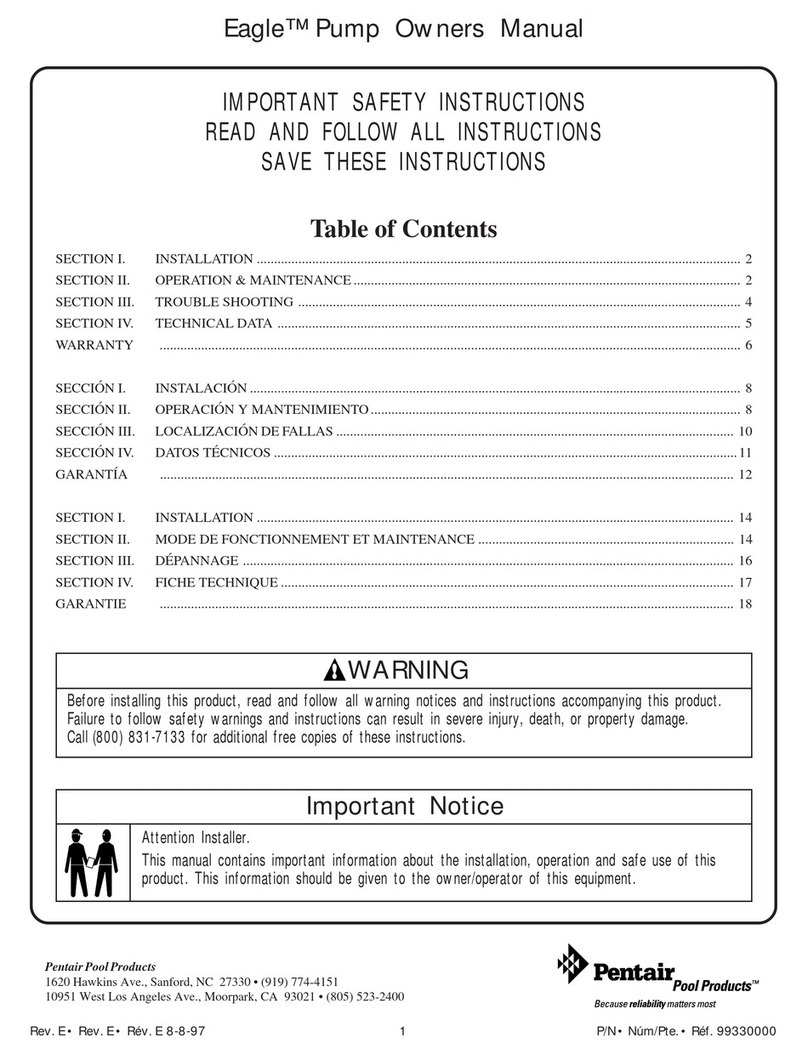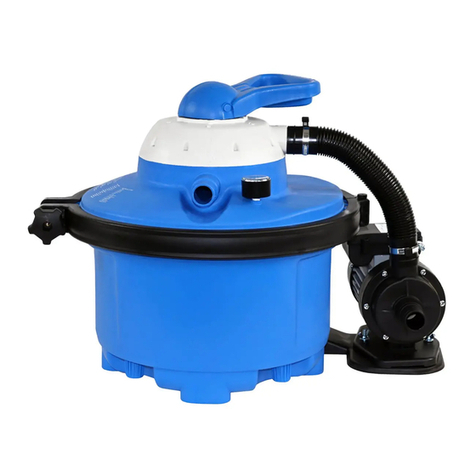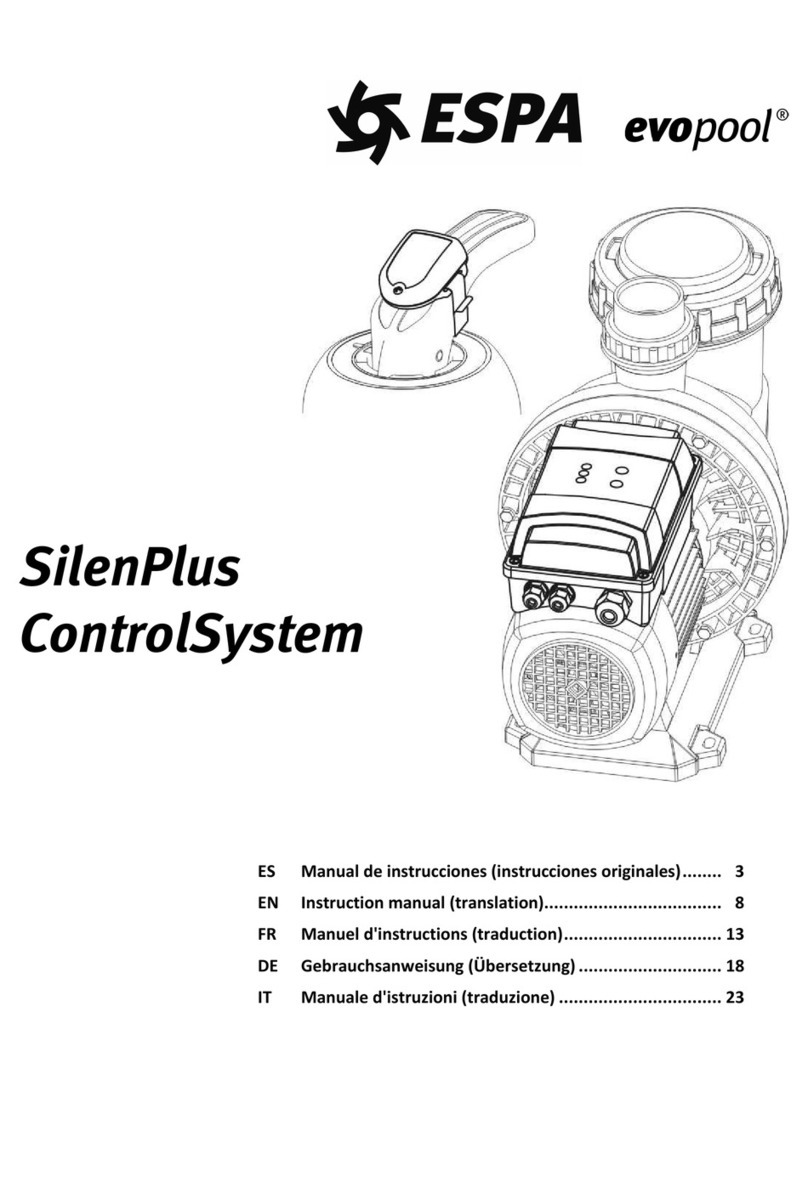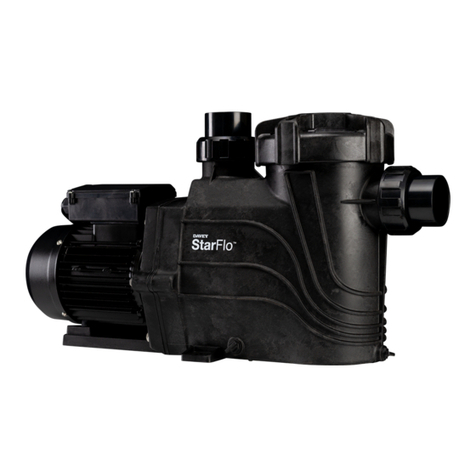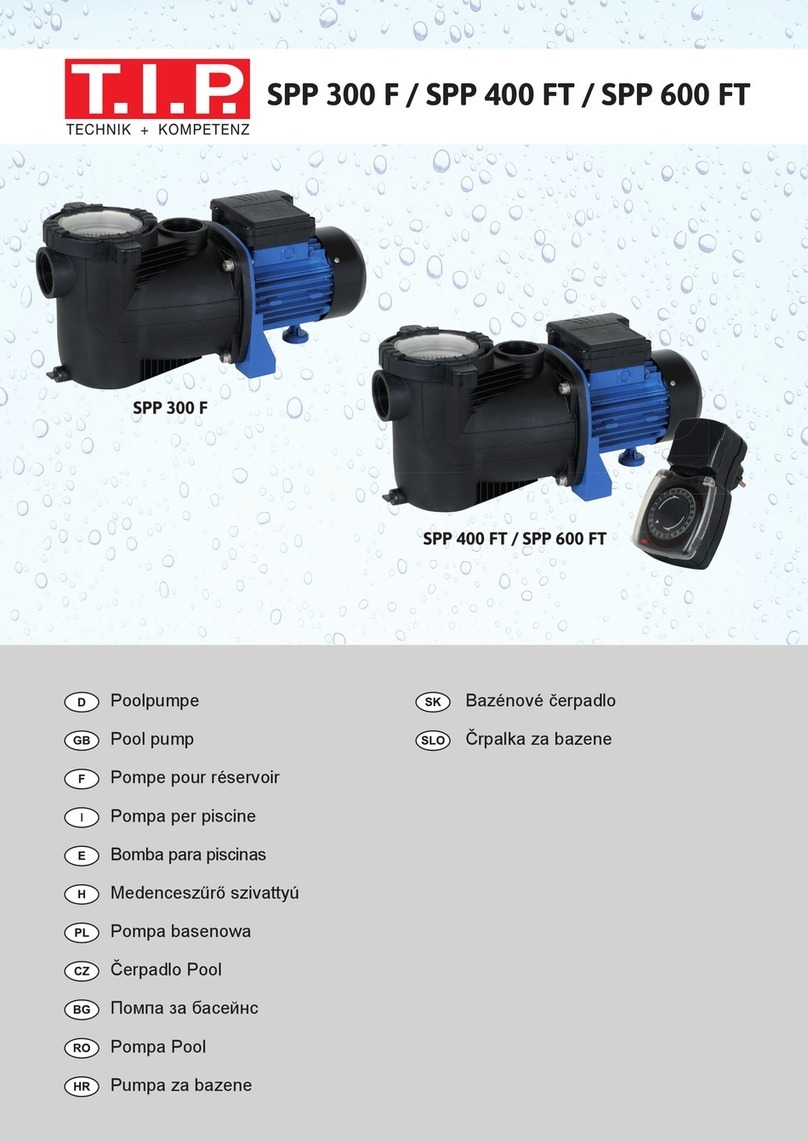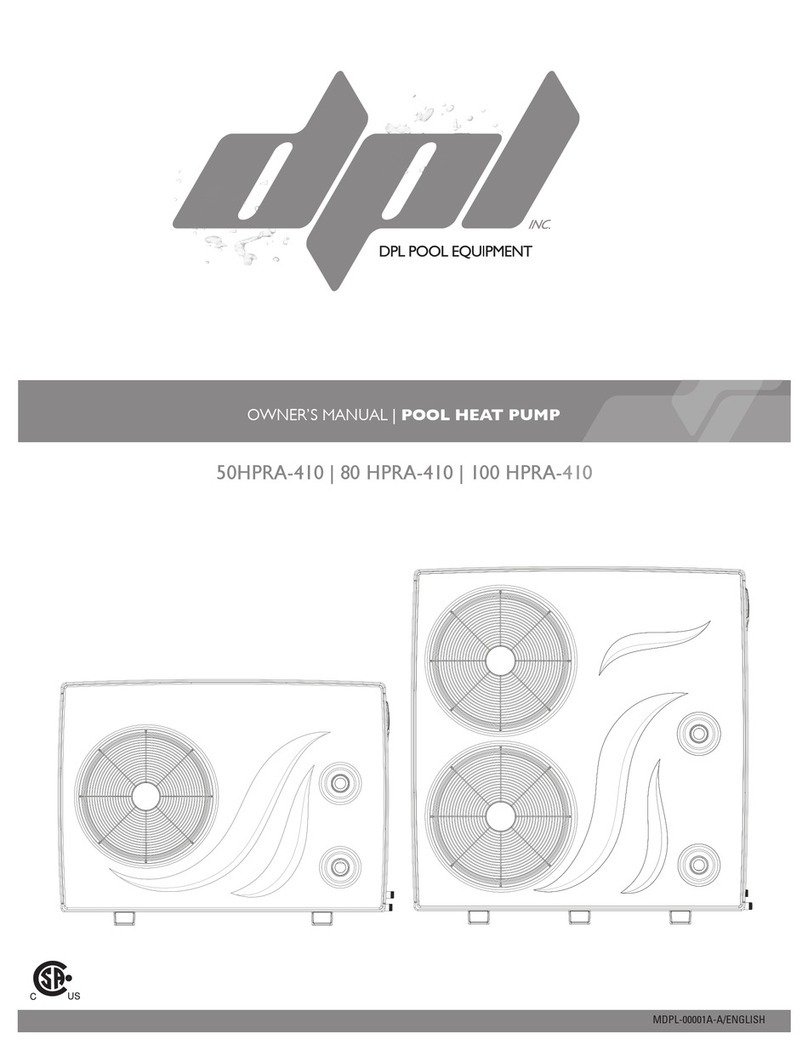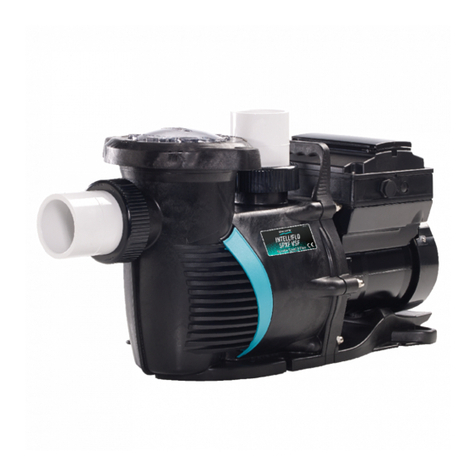
For Professional Technical Support call 1-844-242-2475 3
4. DANGER:Risk of hazardous pressure. Stand clear of pump and filter during start-up. Pool and spa circulation
systems operate under high pressure. When any part of the circulating system (i.e. locking ring, pump, filter,
valves, etc.) is serviced, air can enter the system and become pressurized. Pressurized air can cause the pump
housing cover filter lid and valves to violently separate which can result in severe personal injury or death. Filter
tank lid and strainer cover must be properly secured to prevent violent separation. Stand clear of all circulation
system equipment when turning on or starting up pump. Before servicing pool and spa equipment, make note of
the filter pressure. Be sure that all controls are set to ensure the system cannot inadvertently start during service.
Turn off all power to the pump. Place filter manual air relief valve in the open position and wait for all pressure in
the system to be relieved. Before starting the system, fully open the manual air relief valve and place all system
valves in the “open” position to allow water to flow freely from the pool and spa back to the pool or spa. Stand
clear of all pool and spa equipment and start the pump. Do not close filter manual air relief valve until all pressure
has been discharged from the valve and a steady stream of water appears. Observe filter pressure gauge and be
sure it is not higher than the pre-service condition.
5. DANGER: ALWAYS disconnect the power to the pump before servicing.
6. WARNING: Risk of harm. A clearly labeled emergency shut-off switch for the pool pump and spa jet pump must
be in an easily accessible, obvious place near the pool or spa. Make sure bathers know where it is and how to
use it in case of emergency.
7. WARNING:Risk of harm. To reduce the risk of injury, do not permit children to use this product unless they are
closely supervised at all times.
8. WARNING:Risk of hazardous pressure. Pool and spa circulation systems operate under high pressure.
Incorrectly installed or tested equipment may fail, causing severe injury or property damage. Read and follow
instructions in owner’s manual when installing and operating equipment. Have a trained pool professional perform
all pressure tests. Do not connect system to a high pressure or city water system. Use equipment only in a pool
or spa installation. Trapped air in the system can cause explosion. BE SURE all air is out of the system before
operating or testing the equipment. See the hazardous pressure warning below. Do not use compressed air to
clean, test, or purge equipment for winter.
9. WARNING:All work must be performed by a qualified pool professional, and must conform to all national, state,
and local codes.
10. WARNING:Risk of harm. Pumps improperly sized or installed or used in applications other than for which the
pump was intended can result in severe personal injury or death. These risks may include but not be limited to
electric shock, fire, flooding, suction entrapment or severe injury or property damage caused by a structural
failure of the pump or other system component.
11. CAUTION:Install to provide drainage of compartment for electrical components.
12. CAUTION:These instructions contain information for a variety of pump models and therefore some instructions
may not apply to a specific model. All models are intended for use in swimming pool applications. The pump will
function correctly only if it is properly sized to the specific application and properly installed.
13. CAUTION:Electrical controls such as on/off switches, timers, and control systems, etc. should be properly
installed to allow the operation (start-up, shut-down, or servicing) of any pump or filter without requiring the user
to place any portion of his/her body over or near the pump strainer lid or filter lid. Such installation should allow
the user to stand clear of the filter and pump during system start-up, shut down or servicing of the system. Never
open the inside of the drive motor enclosure. There is a capacitor bank that holds a 230 VAC charge even when
there is no power to the unit. The pump is not submersible. The pump is designed for use with chlorinated pools
only. For use with other applications, contact customer service. The pump is capable of high flow rates; use
